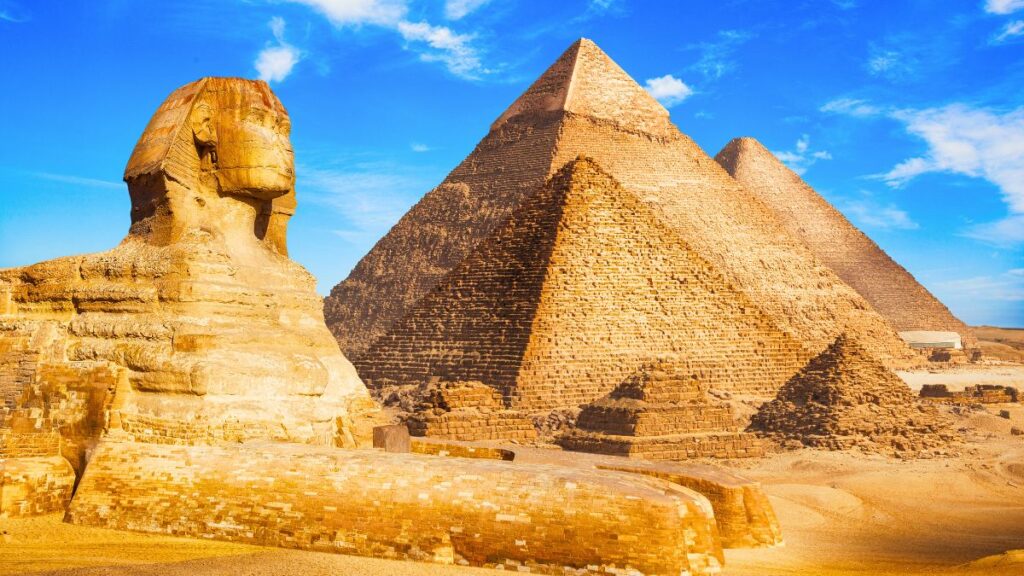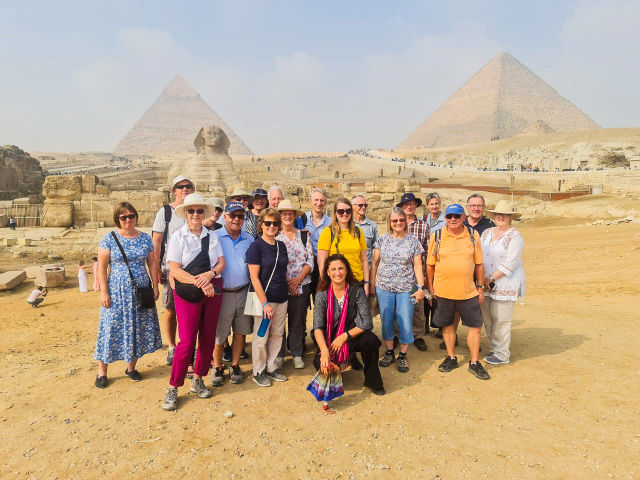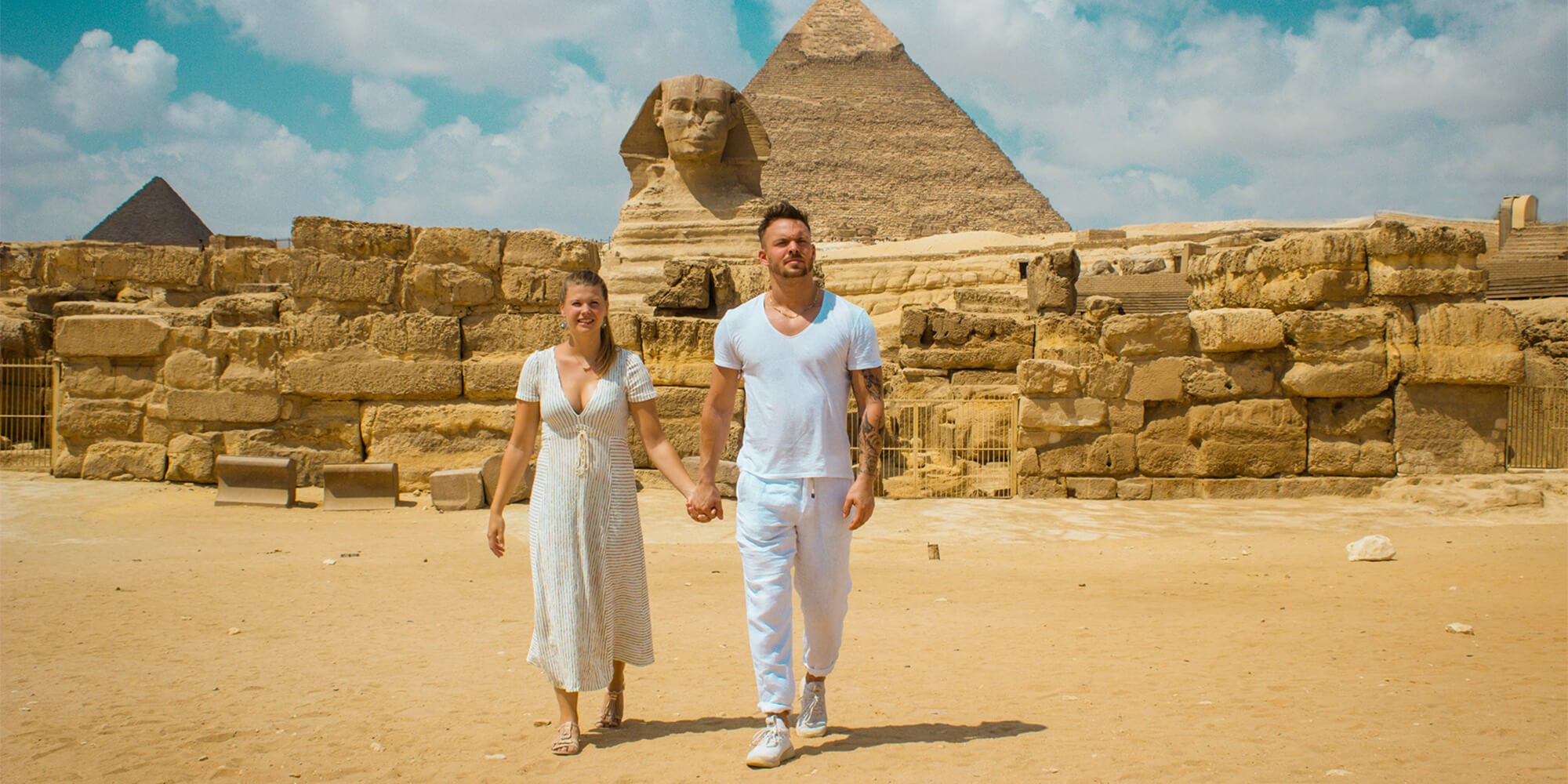Roaming Like Royalty: How to Make the Most of Your Sphinx Tour as an American Traveller

Planning Your Sphinx Tour: A Brief Overview
As you embark on your journey to one of the most iconic landmarks in the world, understanding the significance of the Sphinx will deepen your appreciation for this ancient wonder.
Understanding the Significance of the Sphinx
The Great Sphinx of Giza is not just a massive limestone statue; it is a symbol of Egypt's rich heritage. With the body of a lion and the head of a pharaoh, this enigmatic figure showcases the fusion of strength and wisdom. Here are a few fascinating insights into its significance:
- Guardian of the Pyramids: The Sphinx was believed to protect the pyramid complex, acting as a protector of the pharaoh's tomb.
- Cultural Symbol: It embodies the power of the pharaohs and reflects the ancient Egyptians' reverence for their rulers.
- Mystical Aura: Over centuries, the Sphinx has been shrouded in myths and legends, adding to its mysterious allure.
Imagine standing before this colossal figure, its stone face gazing eternally towards the horizon, a silent witness to the passage of time.
Researching the Historical Context
To truly appreciate the Sphinx, delving into its historical context can be incredibly rewarding. Here are some key elements to consider:
- Construction: Built around 2500 BC, during the reign of Pharaoh Khafre, the Sphinx is a testament to the engineering marvels of ancient Egypt.
- Cultural Impact: The Sphinx has inspired countless artists, writers, and historians, making its mark on the global cultural landscape.
- Archaeological Discoveries: Continuous research and excavations around the site have unveiled more about its origins and significance, leading to theories about its purpose and the intentions behind its construction.
As you research, you might come across intriguing details like the potential connection between the Sphinx and the constellation of Leo, reflecting the ancient Egyptians' deep understanding of astronomy.
Creating your itinerary with these insights will help you connect with the Sphinx on a deeper level, turning your visit into an enriching experience rather than just a sightseeing trip. Enthralled by its mystery and history, you'll undoubtedly want to explore more as you plan your adventure!

Navigating American Travel to Egypt
Now that you're excited about your upcoming Sphinx tour, it's essential to get the logistics sorted out for a seamless travel experience. Understanding visa requirements and health considerations can make a world of difference in preparing for your adventure.
Visa Requirements and Travel Documentation
For American citizens, travelling to Egypt requires some essential paperwork, primarily concerning your visa. Here’s what you need to know:
- Visa on Arrival: Many travellers opt for a visa on arrival. It is typically valid for 30 days and can be obtained at international airports in Egypt.
- Cost: Approximately $25
- Ensure that your passport is valid for at least six months beyond your arrival date.
- E-Visa Options: Alternatively, you can apply for an e-visa before your trip. This can be done online and is quite convenient. Just ensure you apply at least a week before your travel dates.
- Essential Documents:
- A valid passport
- Travel insurance (recommended)
- Print-outs of accommodation bookings and return tickets can be helpful.
To make this process smoother, consider creating a checklist of required documents to keep everything organised and avoid last-minute surprises at the airport.
Health and Safety Considerations
Next up, let’s chat about health and safety – two crucial aspects of your travel itinerary. While Egypt is generally safe for tourists, being vigilant and prepared is always wise.
- Vaccinations: Before heading out, check with your healthcare provider about any recommended vaccinations, especially for diseases like Hepatitis A and Typhoid.
- Health Insurance: Ensure you have comprehensive travel insurance that covers health emergencies. It’s a small step that can prevent large headaches if something goes awry.
- Local Health Guidelines: Stay informed about any health advisories, especially concerning food and water safety.
- Stay Hydrated: The Egyptian sun can be intense. Drinking plenty of bottled water is vital to avoid dehydration.
By preparing your travel documentation and considering health measures, you'll be setting the stage for an enjoyable and safe journey through the wonders of Egypt. Once you've navigated these practicalities, you'll be one step closer to standing in awe before the Sphinx!
Exploring the Sphinx and Pyramid Complex
With your travel documentation in order and a healthy mindset, it’s time to delve into the wonders of the Sphinx and the nearby pyramid complex. This is where the magic truly happens!
Guided Tours vs. Independent Visits
When considering how to explore this awe-inspiring site, you have two main options: guided tours or independent visits. Each has its perks and can significantly affect your experience.
- Guided Tours:
- Expert Insights: A knowledgeable guide can provide fascinating historical context and answer your questions on the spot.
- Convenience: Tours often handle transportation and entry fees, allowing you to relax and soak in the sights without worrying about logistics.
- Social Experience: Group tours can be a great way to meet fellow travellers.
- Independent Visits:
- Flexibility: Exploring at your own pace allows you to linger at the breathtaking views or move quickly past areas that don’t capture your interest.
- Personal Exploration: You can create a tailored experience based on your interests, whether that’s photography, history, or simply enjoying the scenery.
To decide which option suits you best, consider what type of experience you're looking for. If you're someone who thrives on interaction and information, a guided tour may be your best bet. However, if independence fuels your adventure spirit, feel free to go solo.
Must-See Attractions in the Area
Once you’ve determined your method of exploration, it’s time to map out must-see attractions that you can’t afford to miss:
- The Great Pyramid of Giza: The only remaining wonder of the ancient world, it’s an absolute must-visit. Stand in awe of its grandeur!
- The Pyramid of Khafre: Slightly shorter than the Great Pyramid, its unique angle gives it a dramatic appearance, especially with the Sphinx standing guard.
- The Solar Boat Museum: Located near the Great Pyramid, this museum showcases a magnificent ancient boat that was buried alongside the pharaoh.
- The Sphinx: Of course, don’t forget to take a moment to appreciate this iconic figure up close.
- Panorama Point: A fantastic viewpoint where you can capture the entire pyramid complex in one stunning photograph.
Planning your visit around these attractions will undoubtedly enhance your experience, giving you a real feel for the magnificence of ancient Egypt. Whether you choose a guided tour or venture out on your own, exploring the Sphinx and its surroundings promises an unforgettable journey through history!

Embracing the Culture and Local Cuisine
Having marvelled at the Sphinx and the Pyramids, it's time to dive into Egypt's rich culture and tantalising cuisine. Embracing local customs and flavours can enhance your travel experience, turning your visit into a true cultural journey.
Cultural Etiquette and Respectful Behavior
Understanding cultural etiquette in Egypt is essential for a respectful and enjoyable experience. Egyptians are known for their hospitality, but a few simple considerations can make your interactions smoother:
- Greeting: A gentle handshake is common, often accompanied by a smile. When greeting someone, use their title or, if unsure, simply say "Mr" or "Mrs."
- Dress Modestly: While tourists can wear casual clothing, it’s considerate to cover your shoulders and knees, especially when visiting religious sites. This demonstrates respect for local customs.
- Public Behaviour: Displays of affection in public may be frowned upon. It's best to be discreet in your interactions.
By being mindful of these practices, you’ll foster goodwill and open doors to deeper connections with locals.
Sampling Authentic Egyptian Dishes
Now, let's move on to one of the highlights of your visit: the food! Egyptian cuisine is a delightful mix of flavours, spices, and textures that reflect the country's rich history. Here are some dishes you absolutely must try:
- Koshari: A beloved national dish, it’s a hearty mix of lentils, rice, pasta, and topped with a spiced tomato sauce and crispy onions. A filling and satisfying option!
- Ful Medames: This traditional breakfast dish consists of slow-cooked fava beans seasoned with olive oil, garlic, and lemon juice. Pair it with fresh bread for a delightful start to your day.
- Molokhia: A unique green soup made from jute leaves, often served with rice and chicken or rabbit. The flavour is unlike anything else you might have tasted.
- Baklava: For dessert, don’t miss this sweet pastry made of layers of filo dough, filled with nuts, and soaked in syrup. It’s a sweet way to end your meal.
- Street Food: Keep an eye out for food stalls offering grilled meats or vefat (stuffed vine leaves). Trying street food is an adventure in itself!
Engaging with Egyptian culture and cuisine will provide you with wonderful memories and stories to share long after your journey ends. So, indulge in local experiences, try new dishes, and let the warmth of Egyptian hospitality envelop you on your grand adventure!

Capturing Memories: Photography Tips and Etiquette
Now that you've immersed yourself in the rich culture and tasted delicious Egyptian dishes, it's time to think about capturing those incredible memories. The Sphinx and the Pyramids provide some of the most stunning backdrops for your photographs. Let’s dive into the best places to snap those photos!
Best Photo Spots at the Sphinx
When you're at the Sphinx, there are several prime locations to capture breathtaking shots that highlight the grandeur of the site:
- Front of the Sphinx: The classic shot! Standing in front of the Sphinx, with your camera capturing its impressive scale, makes for an iconic picture. Make sure to arrive early to avoid crowds.
- Panorama Point: A short walk from the Sphinx, this viewpoint offers a stunning view of the Sphinx along with the Pyramids behind it. Here’s where you can capture the full scope of this ancient marvel.
- Silhouette at Sunset: For the best dramatic effect, try taking photographs during the golden hour. As the sun sets, the light casts enchanting shadows, perfect for creating a mystical atmosphere in your photos.
- Close-ups of Details: Don’t forget to focus on smaller details, such as the intricate carvings or the textures of the Sphinx. These shots can add depth to your photo collection, showcasing the artistry of ancient craftsmanship.
With a little creativity, you can create a diverse portfolio that captures the essence of your visit.
Respecting Local Customs when Photographing
While photography is a wonderful way to document your journey, it’s crucial to respect local customs to ensure a positive experience. Here are some tips to keep in mind:
- Ask Before You Shoot: Always ask for permission before photographing local people, especially in more remote areas. It shows respect for their privacy.
- No Flash in Sacred Sites: Inside temples and mosques, it’s often forbidden to use flash photography. Be mindful of signs and follow local rules to avoid upsetting anyone.
- Dress Respectfully: If capturing images in religious or sensitive areas, ensure you’re dressed appropriately. This consideration enhances your rapport with locals and shows that you respect their customs.
- Leave No Trace: Be aware of your surroundings. Avoid blocking paths or disturbing the landscape while taking photographs.
By employing these photography tips and being respectful of local customs, you'll create stunning memories while fostering goodwill during your Egyptian adventure. As you look back at your photos, the essence of your experience will come alive through your lens!
Extending Your Trip: Side Trips and Hidden Gems
Now that you’ve explored the wonders of the Sphinx and the Pyramids, why not extend your adventure further? Egypt is brimming with fascinating destinations just waiting to be discovered beyond Giza. Let’s explore some enticing day trips and hidden gems!
Day Trips from Giza
If you’re looking to expand your Egyptian experience, several captivating day trips are easily accessible from Giza:
- Saqqara: Just a short drive from Giza, Saqqara is home to the Step Pyramid of Djoser, the oldest colossal stone building in Egypt. Wander through this ancient necropolis and marvel at the beautifully preserved mastabas.
- Dahshur: This lesser-known site features the Bent Pyramid and the Red Pyramid. Both offer incredible insights into the evolution of pyramid construction. The Red Pyramid, in particular, is less crowded, making it perfect for a more relaxed exploration.
- Memphis: Not far from Saqqara, this ancient capital of Egypt boasts a fascinating open-air museum that displays colossal statues and artefacts from the time of the pharaohs.
Taking these side trips not only enriches your understanding of Egypt’s history but also allows you to witness some breathtaking landscapes away from the tourist crowds.
Off-the-Beaten-Path Destinations in Egypt
For those who crave a true adventure, consider venturing to some of Egypt's hidden gems that are often overlooked by tourists:
- El-Minya: This lesser-known city along the Nile is home to the tombs of the ancient nomarchs of Elephantine and offers a glimpse into Egypt's vibrant history. The nearby tomb of Akhtoy is adorned with beautiful wall paintings.
- Abydos: Known for the Temple of Seti I, Abydos is one of the most important archaeological sites in Egypt, featuring stunning reliefs. It’s a bit of a trek but offers a rewarding experience away from the usual tourist paths.
- Wadi El-Hitan: Also known as Whales Valley, this UNESCO World Heritage Site is located in the Western Desert and is famous for its fossilised whale skeletons. It's a unique spot for nature lovers and those interested in the Earth's history.
By exploring these side trips and hidden gems, you can discover the rich tapestry of Egyptian culture and history at your own pace. Each destination offers its unique charm, adding layers to your unforgettable Egyptian adventure!
